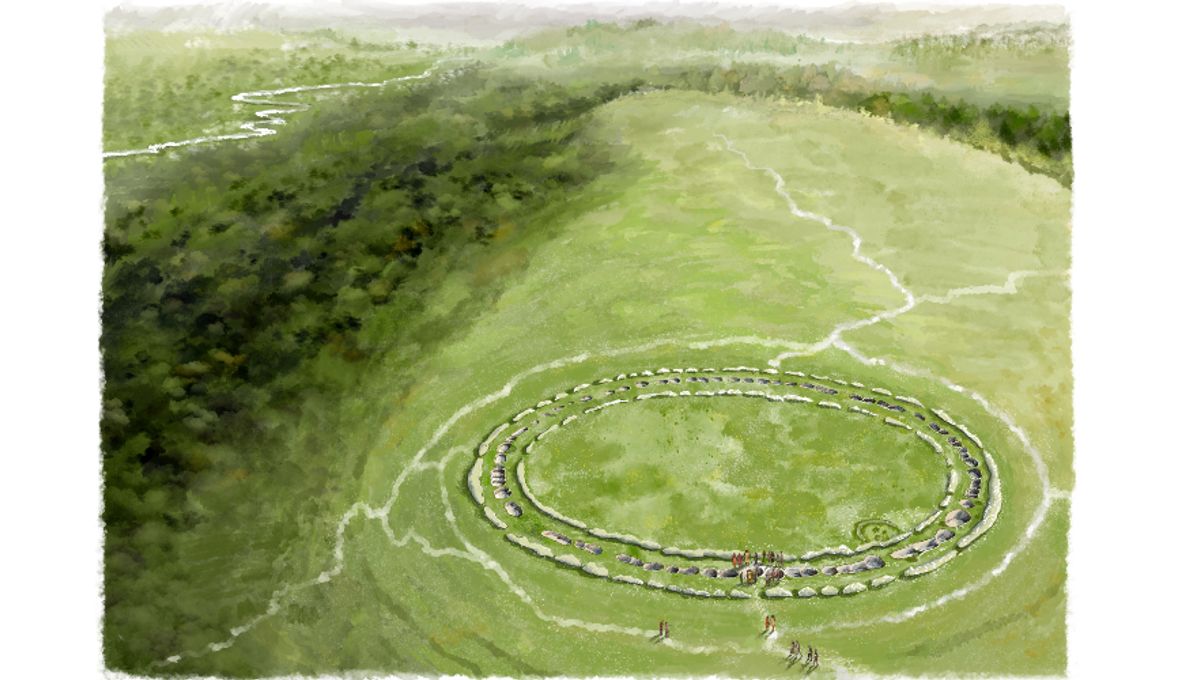
Stonehenge may be the most famous example of the “huge stones arranged in a circle” genre, but it’s a reputation that arguably isn’t deserved. After all, it’s far from the largest henge in Europe, or even the British Isles – and as a new analysis and redating of an ancient circle in Dorset, England, has now reinforced, it’s not the oldest one either.
ADVERTISEMENT
Flagstones, a prehistoric burial site, is not a new discovery. It was originally found in the 1980s, in fact, during the construction of a bypass route around the town – despite the discovery, the project went ahead, and half the site now lies underneath the road.
Still, the areas archeologists could reach provided intriguing clues to the site’s history. “Flagstones is an unusual monument,” explained Susan Greaney, a specialist in Neolithic and Bronze Age monuments and lecturer in Archeology at the University of Exeter, in a statement today.
“In some respects, it looks like monuments that come earlier, which we call causewayed enclosures, and in others, it looks a bit like things that come later that we call henges,” she said. “But we didn’t know where it sat between these types of monuments.”
Originally, it was thought to date to around 2900 BCE – the same time as Stonehenge. It made sense: as a circle of intersecting pits, 100 meters (328 feet) across, Flagstones was strikingly similar to its more famous cousin’s first phase of construction – it’s roughly the same size and shape, and even seems to have been constructed with the same antler pick technology that was used for Stonehenge.
Like Stonehenge, Flagstones was used for burials – at least four bodies fully or partially cremated, and three interred without cremation. Even the details of the graves were consistent, with some grave goods in Flagstones being almost identical to those found in Stonehenge.
Most convincing of all: initial radiocarbon dating placed the artifacts at Flagstones as around 4,400-5,000 years old – a broad range of dates, certainly, but not one that precluded the period of Stonehenge’s construction. Overall, it was a pretty safe bet that the two monuments were basically the same age.
ADVERTISEMENT
But until now, nobody had really checked.
Today, we have dating techniques that would put those used in the 1980s to shame. Collaborating with laboratories at ETH Zürich and the University of Groningen, Greaney and colleagues obtained 17 new and far more precise estimates for the monument’s age – and what they found was surprising. “The revised chronology places it in an earlier period than we expected,” Greaney said.
Rather than dating from 2900 BCE, it seems Flagstones’s construction began as early as 3650 BCE, with the circular ditched enclosure and burials being added in around 3200 BCE. That makes the Dorset monument at least a couple of centuries older than Stonehenge – which, in turn, raises some interesting questions about how the two circles were related.
“The chronology of Flagstones is essential for understanding the changing sequence of ceremonial and funeral monuments in Britain,” said Dr Greaney.
ADVERTISEMENT
“Could Stonehenge have been a copy of Flagstones?” she suggested – “or do these findings suggest our current dating of Stonehenge might need revision?”
The study is published in the journal Antiquity.
Source Link: "Sister" Monument Of Stonehenge Is Centuries Older Than Previously Thought